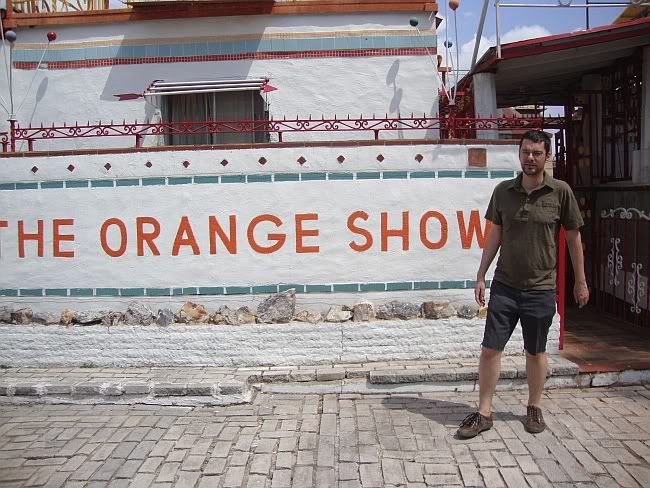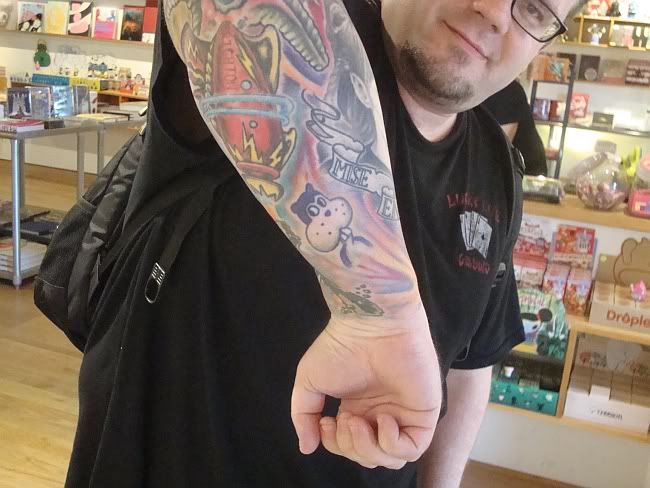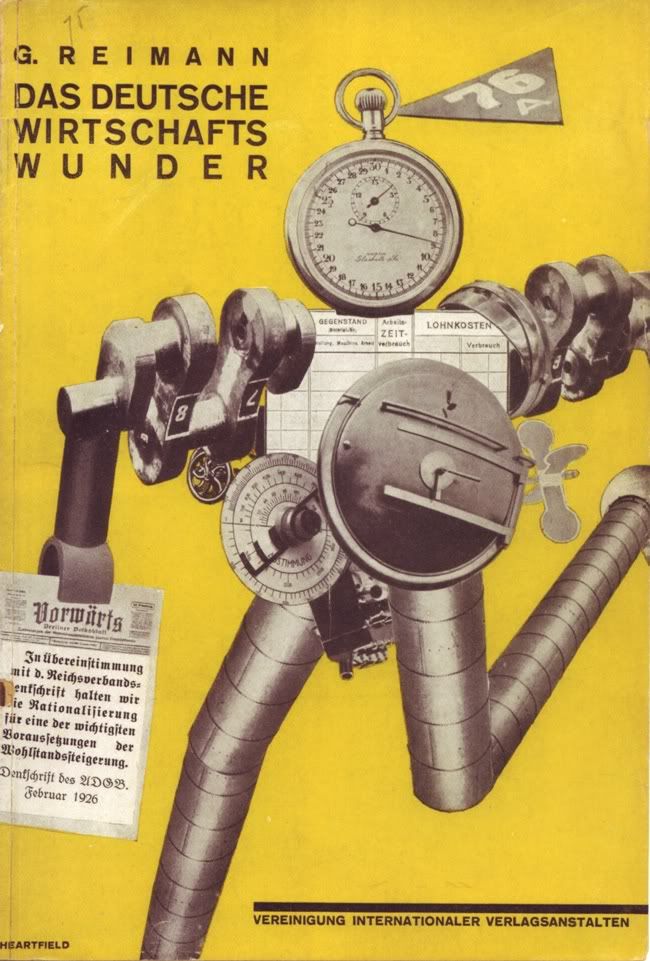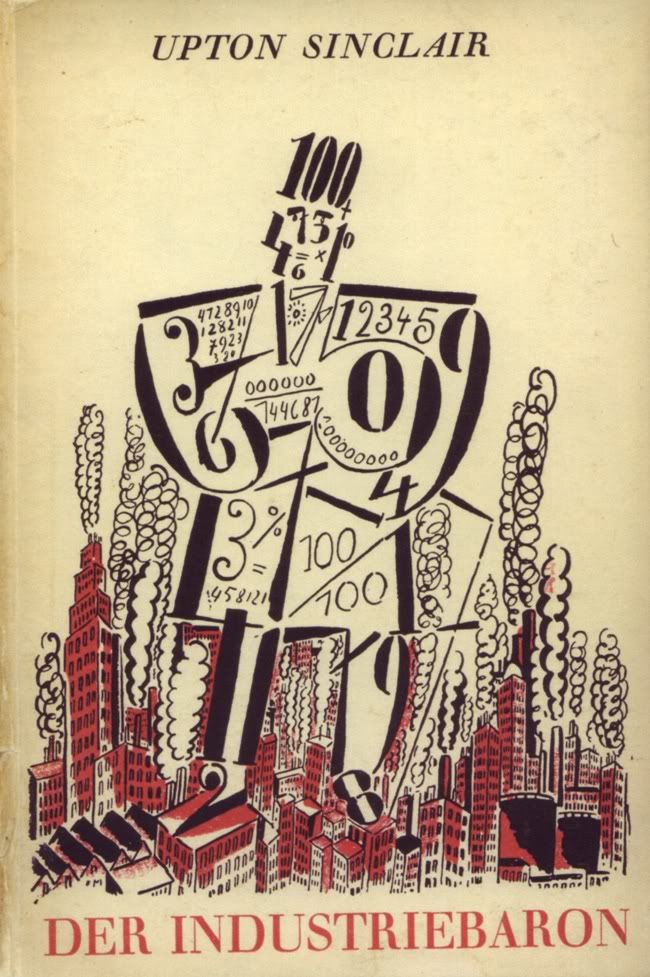by Robert Boyd
The
University of Houston has an excellent art program. We're lucky to have it. And every year, a new crop of MFA students put up their thesis work at the
Blaffer. It's a brief exhibit, lasting less than a month (see it before May 15!). That said, each year one finds that a lot of the artists in it have already made an impact on Houston, showing work in local galleries and art spaces. For example, I would have never suspected that David Graeve was a student. I thought he was a pretty well-established local artist. And one look at
his CV (up at the
Colton-Farb website) shows an exhibition history that goes back to 1986. I wouldn't be totally surprised in some of his fellow MFA students had been
born in 1986.
 David Graeve, Homemade Ice Cream, balloons and projections, 2011
David Graeve, Homemade Ice Cream, balloons and projections, 2011
So what's he doing getting an MFA at this stage? I have no idea. But I can speculate. He seems like an artist who knows what he is doing--someone who doesn't need additional mentoring. Furthermore, I get the impression that he is plugged into the local scene quite well, and if he felt he needed additional instruction, he is surrounded by artistic peers who can help him out. So why an MFA? Credentials. If you are a young artist with a certain amount of success (and given his exhibition history, Graeve seems reasonably successful), you can get by OK, even if you are basically pretty poor. But as you get older and maybe you have a spouse and children and a mortgage and a need for health insurance, teaching at a university starts to look very attractive. And while I'm certain that it is
possible to get a teaching job without an MFA, I'm pretty sure it is much easier to get one with an MFA in your pocket.
So is this why David Graeve went through the MFA program at UH? I don't know. But whatever the reason, one result is a couple of his giant balloon pieces--the one pictured above and one even larger one in the courtyard of the gallery--are on view. And I like them a lot. The big black bubbles of
Homemade Ice Cream feel especially sinister within the white cube of Blaffer, like a foam of dark matter breaking through into our universe.
 Francis Giampietro, "Thy creature, to whom thou art bound by ties only dissolvable by the annihilation of one of us!", reconstituted refrigerator, pressure treated wood, furniture leather, ice and pvc, 2011
Francis Giampietro, "Thy creature, to whom thou art bound by ties only dissolvable by the annihilation of one of us!", reconstituted refrigerator, pressure treated wood, furniture leather, ice and pvc, 2011
Then you have young artists like
Francis Giampietro. I first saw his work at
the Temporary Space (a space run by one of last year's MFAs, Keijiro Suzuki), and I liked it so much that I contacted him to be
in the Fringe Festival exhibit I curated last year. The work in this show is a little different--he uses machines as part of the work. Don't ask me to explain it, though. I know Giampietro always has a clear idea of what his work represents, but it's certainly not always clear if you aren't him. However, while much of his earlier work dealt with unnatural transformation (of the body), perhaps this piece, with its refrigerator parts and its pressure-treated wood, refers to unnatural
preservation. Of course the title feeds into that interpretation--it's a quote is uttered by Frankenstein's monster to Dr. Frankenstein. He's saying, you created me, now you are stuck with me. If they could speak, would the substances we have created--pressure-treated wood, plastics of all sorts, plutonium--say the same?
 Francis Giampietro, "Nature is crooked, I want right angles, straight lines", composite capital, plaster, paint color matched to leathered pigskin, chalk line and exercise machine weights, 2011
Francis Giampietro, "Nature is crooked, I want right angles, straight lines", composite capital, plaster, paint color matched to leathered pigskin, chalk line and exercise machine weights, 2011
This title comes from
The Mosquito Coast, a movie (based on a Paul Theroux novel), about a family yanked from their comfortable American life by their eccentric father to go live on a remote tropical island. But what relationship this book and movie have with the piece is unclear to me. What the composite capital has to do with anything is likewise mysterious. The "pigskin"-colored paint, the chalk line and the weights may all refer to football, and therefore in a way to Giampietro's earlier work that dealt with body-transformation via football training regimens. But really, like much of his work, it is fairly opaque. You're unlikely to get out of it what Giampietro put into it. Instead, it is best to allow yourself to simply receive these collections of disparate objects as they are, and if you wish, to synthesize your own meaning from them. These works are "As beautiful as the chance encounter of a sewing machine and an umbrella on an operating table,"to quote the famous line from Lautreamont.
Another alumnus of the Temporary Space is
Jeremy DePrez. His work here is spare but not minimal. It's too witty for that..
 Jeremy DePrez, 5 out of 194 Countries I Have Never Been To, oil and acrylic on canvas with country selection assistance by http://www.randomcountry.com, 2011
Jeremy DePrez, 5 out of 194 Countries I Have Never Been To, oil and acrylic on canvas with country selection assistance by http://www.randomcountry.com, 2011
(I'm no painter, but I can play this game, too. So here are five countries I have never visited, chosen by www.randomcounty.com: Turkey, Nicaragua, Saudi Arabia, Bosnia and Herzegovina, Greenland.) The big blank spaces could be taken to represent all the countries he chose
not to depict. And the same concept could apply to other pieces he has in the show.
 Jeremy DePrez, Visual Artifacts from my Bedroom, oil, acrylic and tape on canvas with objects and muslin on the floor, 2011
Jeremy DePrez, Visual Artifacts from my Bedroom, oil, acrylic and tape on canvas with objects and muslin on the floor, 2011
Unless DePrez lives in extremely spartan circumstances, we can safely assume that there are many more "visual artefacts" in his room than the two depicted here. With these two pieces, DePrez is engaging in the visual equivalent of metonymy, allowing a thing (or a small collection of things) to represent a larger thing. The five maps he draws represent all the countries he's never visited. This is quite different from the
"What you see is what you see" philosophy that underlies so much minimalism.On the contrary, I am reminded of Borges' introduction to
Dr. Brodie's Report. He wrote that he was seeking ". . . to write straightforward stories. I do not dare state that they are simple; there isn't anywhere on earth a single page or a single word that is, since each thing implies the universe, whose most obvious trait is complexity."
 Emily Peacock, My Sister and I (First Bath), C Print, 2010
Emily Peacock, My Sister and I (First Bath), C Print, 2010
This was one of those things where you look at the photo, look at the title, pause, then laugh. That pause is where befuddlement turns into humorous understanding.
Emily Peacock's thing seems to be about looking at her own family in several ways. One way is to restage photographs. In this case, the original protagonists of what I assume was an baby photo of the two sisters in the bath is reenacted by the two sisters in adulthood. In this regard, Peacock is similar to
Irina Werning. But in
MeeMee and Me, she places herself in place of her grandmother.
 Emily Peacock, MeeMee and Me, C Print, 2010
Emily Peacock, MeeMee and Me, C Print, 2010
Peacock is dealing with family, an issue that weirdly enough is very common in literature but seems somewhat rare in contemporary art (but a local exception to that is the work by
Hillerbrand+Magsamen up at Lawndale right now). The pieces are sometimes a little shocking (when they deal with medical issues) but I feel also a level of warmth and perhaps most of all comfort--it's appropriate that "familiar" and "family" have the same root. This doesn't feel like a dysfunctional or estranged family, nor a "perfect" family. The recreations seem, in the end, very loving.
 Jay Giroux, Untitled from the series Happily Ever After, The End #1, acrylic on canvas, 2011
Jay Giroux, Untitled from the series Happily Ever After, The End #1, acrylic on canvas, 2011
This painting has the awkward title
"Untitled from the series
Happily Ever After, The End #1". And I'm not even sure that's the correct title--the wall information was a little confusing. But I liked the
Lari Pittman-like burst of colors, seemingly uncontrolled (and certainly chaotic), but on closer inspection, very precisely painted. I find this work jaunty and pleasurable, as I do with a lot of Lari Pittman's work (although he can hide a lot of pain in his work, too) or
Stephanie Toppin's paintings.
When I went to see this show, the Blaffer was also having a book clearance. For twenty bucks, they would give you a canvas bag and all the books you could cram in it. Heaven for a book-lover like me. Among the many books I got were a pile of pamphlet-sized catalogs for earlier Blaffer MFA exhibits--2001, 2004-2006, 2008, and 2009. And I got to thinking about those earlier shows and this exhibit.
The University of Houston turns out new MFAs every year. Because these artists are here in Houston for a while, they are part of Houston's art ecology. An ecology or ecosystem involves cycles of life and death. In the case of the UH MFA program, artists enter the program--some from Houston but many (if not most) from elsewhere. They are here during the program. After they graduate, some leave Hopuston and some stay, at least for a while.
I looked at those old catalogs to see who was still around. I excluded the graphic communication and interior design MFAs--I was looking for the kind of artists one might see in a gallery or art space. Of the 2001 class, one artist,
Anderson Wrangle, is now teaching at Clemson, and one is working for the Museum of Fine Arts here in Houston. The other three I'm unsure of, although at least two of them seem to have been in Houston recently. I guess the key question is are they still involved with art in some way--are they still part of our local art ecology?
The class of 2004 offers up no names that are familiar to me. But two of them are teaching high school art (which is awesome--long live high school art teachers everywhere!) in Humble while one teaches in Cy-Fair.
Soody Sharifi apparently still lives in Houston, but has representation in a
New York Gallery. Others have moved on to professorships outside Houston, but
Lotus Bermudez (née Witt) teaches ceramics at U.H. So a substantial proportion of the 2004 MFAs are still part of the Houston art ecosystem, although not necessarily in a highly visible way.
2005 hit the jackpot. Three of its MFAs are well-known local artists, represented by important galleries.
Michael Bise, whose recent Moody Gallery show was
reviewed here, is also one of my favorite local art writers.
Anthony Shumate followed up his successful
Barbara Davis solo show with an intriguing group of works that are currently on view at
Lawndale. Kent Dorn's grungy paintings can be seen at
McClain Gallery.
Che Rickman is in Houston and recently did a performance at FrenetiCore, where she is
an artist in residence. But there are several artists that I can't find anything about, and of course some have moved on from Houston.
As the catalogs get closer to the present, I am familiar with more artists. This suggests something--that time pulls artists out of the local scene, if not away from art all-together. 2006's
Rabe'a Ballin (an artist whose work I like so much that I bought one of her pieces),
Douglas Cason (who apparently also teaches high school art in LaMarque),
Aram Nagle, and
Kathryn Kelley are all active locally and have had work in local artspaces within the past year or so. But quite a few of the class of 2006 have dropped off the radar (or, at least, I wasn't able to find much about them with a cursory Google search).
The same pattern repeats in 2008, where
Elia Arce,
Chuy Benitez and
Woody Golden (another artist I included in the Fringe Festival exhibit last year) are pretty well-known locally. The rest of 2008 seems to still be mostly still in the Houston area. But if the patterns observed above hold, many will either leave or drop out of art making (at least in terms of making art for the public).
The last catalog I have is from 2009, and we see a couple of impresario-types. By this, I mean people who set up their own galleries or who curate a lot of shows. One of the first young artists I met after I started work on Pan was
Emily Sloan, who has since started
Gallery 1724 and well as curating other shows--primarily at
Box 13.
Cody Ledvina is half of the duo that runs
The Joanna. (And in the next year, we had Keijiro Suzuki, another impresario.) I don't know what the future holds for Sloan and Ledvina, but I could easily see them going on to be commercial gallery owners or directors of art spaces. Is learning this kind of thing part of the curriculum at UH? The artist from the class of 2009 who seems to have found the most success is
Cheyanne Ramos,
who had
a solo show at McMurtrey Gallery last year. (I bought a small collage from that show.) I've also seen art by
Michael Brims and
Dennis Harper. But the rest of the class of 2009 are somewhat cyphers to me.
The reason I wanted to reflect a bit on previous MFA classes was to think about what happens once you get your MFA. I still actually have more questions than answers. High schools seem to absorb a few, and some become professors or adjunct instructors. A few seem to have high profile (locally) careers, but one has to wonder if they can continue. Many move away from Houston or stop being active in the local scene. I expect we will see the same with the class of 2011. They'll probably mostly stick around Houston for a few years, but gradually some will find opportunities elsewhere and some will find non-art opportunities; the number who are still active and visible in Houston will gradually dwindle.
Take a Poll: I'm interested to
hear from UH MFAs.



















